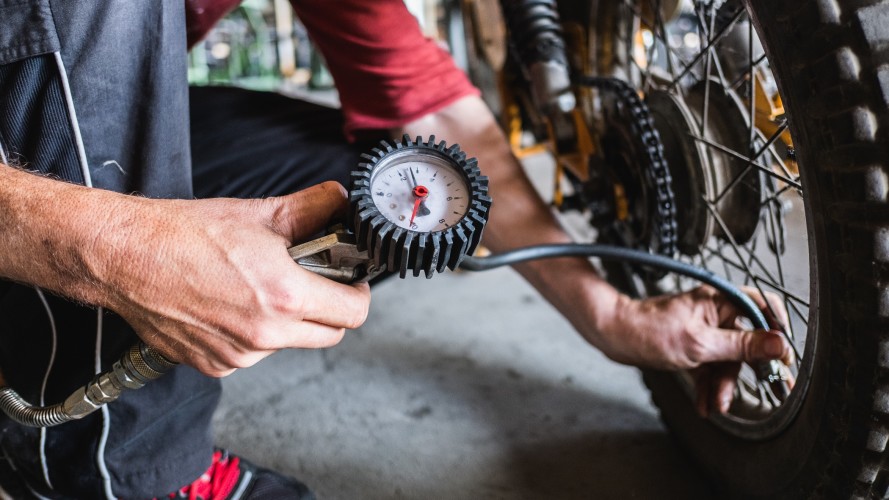

TyreSafe is urging riders to remember tyre safety as part of The National Fire Chiefs Council (NFCC) THINK BIKE week.
The campaign, which runs from 23 April to 3 May, is being spearheaded by Fire and Rescue Services across the country and 40 partner agencies, including TyreSafe. THINK BIKE highlights the need for riders to wear the right kit and ‘brush up’ on their riding skills as so many will have had an exceptionally long time out of the saddle due to Lockdown.
Another key message is on bike maintenance and ensuring machines are in good roadworthy condition, especially the tyres.
While there is a common perception that bikers look after their gear, in fact, they are just as likely to fail their MoT due to tyre defects as car owners. More worryingly, motorbikes are three times more likely to be involved in a tyre-related incident than car owners.
With just two wheels, the amount of contact motorbikes have with the road for safe handling and braking is the least of any vehicle, making it critical that tyres are in good condition and properly inflated for rider safety.
Before setting off for a ride, especially if the bike has been left standing for an extended period, owners should thoroughly check their tyres’ including the air pressure. Tyres lose air over time so it is very likely they will need to be re-inflated to the bike manufacturer’s recommended settings.
The minimum tread depth requirement for all two-wheelers over 50cc is 1mm. With ‘unexpected’ downpours to be expected in Britain at any moment, adequate tread depth will be essential for cutting through surface water and maintaining grip. For those under 50cc, the legal requirement is for a clear and visible tread pattern.
A tyre’s condition must also be thoroughly assessed. Any signs of cracking may mean it is now unroadworthy along with any signs of lumps or bumps, which can indicate internal damage.
However, owners of motorbikes should be particularly aware of the criteria for safely repairing a puncture. The guidance from BSI, the safety standards institution, is that no tyre of Z rating or higher should be puncture repaired at all. In fact, this message is typically embossed on them. With tyres of that speed rating accounting for 60% of motorcycle tyres, owners of big bikes should be prepared to replace not repair tyres which have suffered a puncture.
Stuart Jackson, TyreSafe Chair, said: “Properly maintaining a motorbike is part and parcel of the commitment owning a motorcycle brings with it. There is no shortcut to safety on a two-wheeler and riders must minimise their risk of an incident on the road by ensuring their machine is in roadworthy condition. Check the tyres are in good condition and at the right pressure and if a rider suffers a puncture on a big bike, don’t prioritise minimising cost at the expense of safety – check to see whether that tyre can be safely repaired and, if not, be prepared to replace it before riding again. If in doubt, don’t chance it, change it.
“Many will have waited for what seems like an eternity to get their dream machine back out on the roads – don’t ruin it by risking your safety before you even turn the key.”
For more info checkout: www.tyresafe.org







